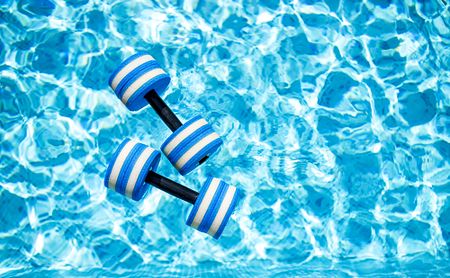Swimming, Hydrotherapy Improve Functional Capacity, Study Shows

Both swimming and hydrotherapy can improve functional capacity in hemophilia patients, according to data from a recent study.
Of those two types of aquatic exercises, however, hydrotherapy was associated with the most significant functional improvements in these patients.
Those findings were reported in the study, “Aquatic exercise in patients with haemophilia: Electromyographic and functional results from a prospective cohort study,” published in the journal Haemophilia.
Recurrent joint bleeds in hemophilia cause progressive musculoskeletal impairments that limit a person’s capacity to engage in physical activities, a measure called functional capacity.
Aquatic exercise is a promising form of rehabilitation because it enables people to perform certain movements and exercises that could be more difficult to accomplish otherwise. Few studies, however, have evaluated aquatic activities as a possible treatment for hemophilia patients.
Researchers from the University of Campinas in Brazil sought to bridge this gap by assessing specific, measurable changes in muscle function of hemophilia patients taking place before and after they completed a set of different aquatic exercises.
The team recruited 47 hemophilia patients, ages 6 to 40, who were assigned to complete either 24 swimming sessions or 24 hydrotherapy sessions.
From the 47 originally recruited to participate in the study, 32 completed all exercise sessions. Among those who completed the study, 23 had been diagnosed with severe hemophilia A, one with moderate hemophilia A, and eight with severe hemophilia B.
The investigators assessed patients at the beginning and end of the study, using both questionnaires and electrophysiological measurements.
Questionnaires included the Functional Independence Score (FISH), the hemophilia joint health score (HJHS), and the Pediatric Hemophilia Activities List (PedHAL), which all were used to assess participants’ functional capacity.
Electrophysiological measurements consisted of using surface electromyography (SEMG) of thigh muscles to assess electric activity, and load cell measurements on thigh muscles to evaluate strength.
Although participants in both groups saw their FISH, HJHS, and PedHAL scores improve over time, those who completed hydrotherapy sessions experienced more significant gains in functional capacity.
Participants undergoing hydrotherapy showed statistically significant improvements in their FISH, HJHS, and PedHAL scores over the course of the study. Those using swimming sessions also improved across all three measures, but these improvements reached statistical significance only with HJHS and PedHAL.
Volunteers in the swimming group showed significant improvements in muscle strength among all muscles tested. In contrast, those in the hydrotherapy group showed no statistically significant changes in the strength of either knee extensor muscles.
Both swimming and hydrotherapy led to significant improvements in the electric activity of patients’ vastus lateralus, a large muscle of the outer thigh. Significant improvements in the electric activity of the vastus medialis — located on the inner thigh — was seen only among individuals in the swimming group.
“These results suggest that hydrotherapy may lead to a more significant improvement in functional abilities,” the researchers wrote, adding these findings were in agreement with several past studies.
“In conclusion,” the research team wrote, “the results obtained suggest that both swimming and hydrotherapy are aquatic resources capable of improving functional capacity in haemophilia patients, but only hydrotherapy was able to enhance the FISH scale.”






